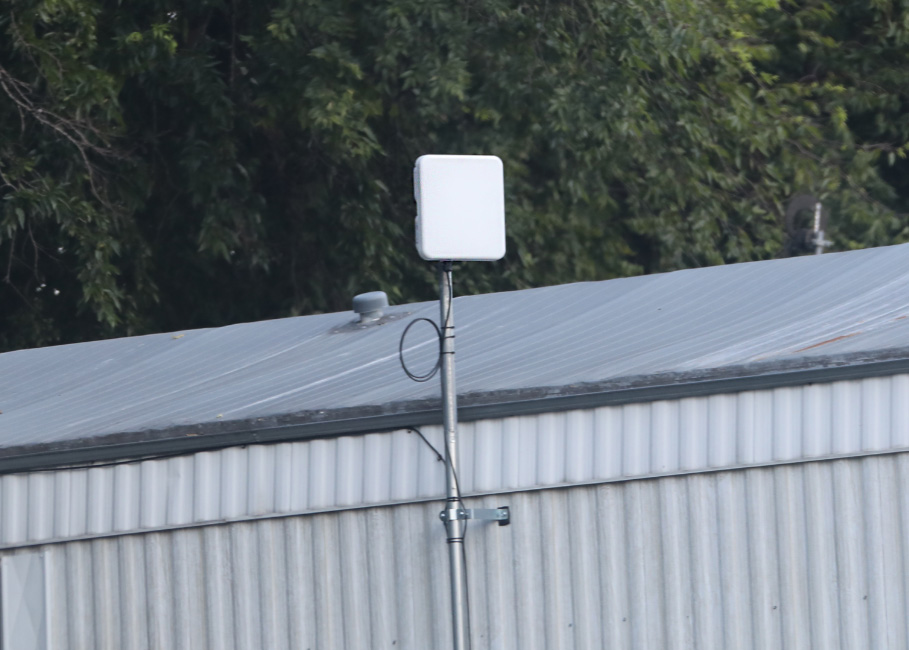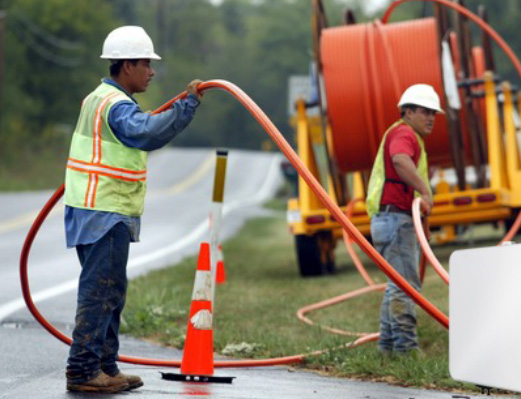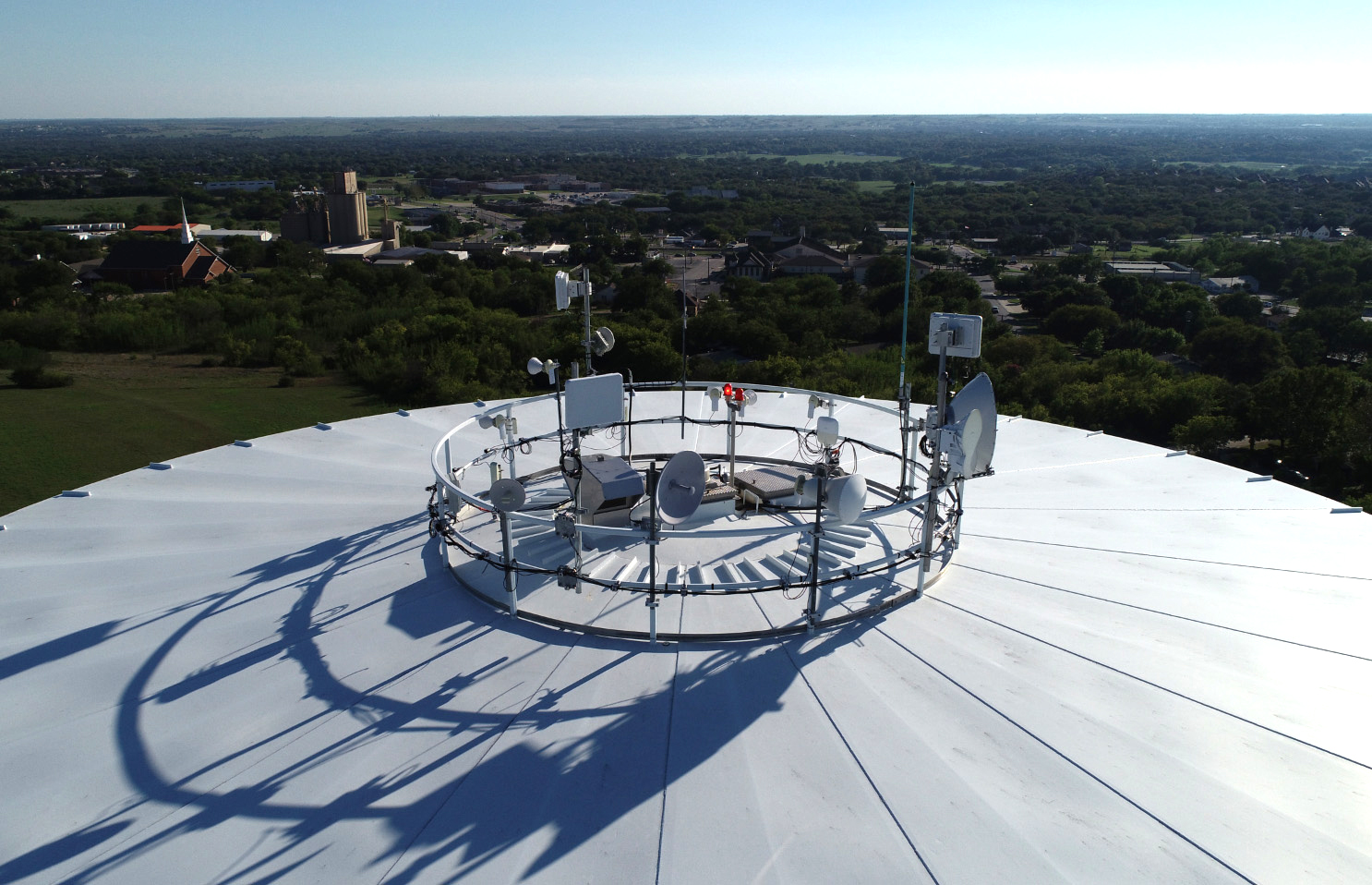Challenge: Nextlink has committed to provide gigabit-speed broadband to over 200,000 rural households and business.
Solution: Tarana’s G1 platform offers rapid deployment of fiber-class connectivity at scale.
Results: With G1, 1,000 subscribers were connected in just one month.
Speeds: Nextlink offers packages of up to 500 Mbps download speeds.
Distance: Base node sectors are reaching distances over 10 miles.
Subscribers: Up to 209 subscribers are connected to a single base node.
Visibility: Many links are n/NLoS.
Internet service providers know there are three keys to success: speed of deployment and subscriber acquisition, high-speed connections and the higher ARPU and competitiveness they enable, and delighting customers at an attractive price point. The executive and technical teams at Nextlink Internet spent significant time evaluating Tarana’s broadband products, and they selected Tarana’s next-generation fixed wireless access (ngFWA) platform as a major partner for new wireless deployments and upgrades.
For example, with the Gigabit 1 (G1) platform, Nextlink connected 1,000 subscribers in just one month at speeds of 500 Mbps with towers supporting as many as 209 subscribers per G1 base node.
A Commitment to Performance
Nextlink Internet is a rural-focused provider of high-speed internet and phone services in 11 central-US states. They have appeared on Inc. Magazine’s list of fastest-growing companies, the Inc. 5000, six of the last seven years with cumulative revenue growth over the last three years of 170%.
As one of the larger winners in the Connect America Fund (CAF) and Rural Digital Opportunity Fund (RDOF) programs, Nextlink has made a commitment to provide gigabit-speed broadband to over 200,000 rural households and businesses.
ngFWA for a Great Subscriber Experience
Nextlink looked at many solutions, including fixed wireless and fiber, to meet their commitments. “One of the key things that Tarana enabled us to do in the RDOF program was to show that we could do gigabit performance in fixed wireless,” said Bill Baker, Founder and Chief Executive Officer of Nextlink. “Honestly, a couple years ago, no one could do that at scale.”
With Tarana’s G1 platform, Nextlink is offering broadband speed packages of 500 Mbps today, and plans to offer gigabit speeds. This is above and beyond its original regulatory commitment of 100 Mbps.
Higher speeds have also enabled Nextlink to go after new markets and the additional revenue growth they represent without sacrificing performance or customer experience. “Tarana allows us to cover a greater geographic area in a much shorter time, and capture an audience that was previously unattainable without sacrificing speed, capacity or reliability,” said Cameron Kilton, Chief Technology Officer at Nextlink.
Rapid deployment has been key to Nextlink gaining market share, retaining, and delighting their customers, and offering faster speed tiers at a higher ARPU — a true win-win.
Nextlink was able to roll out a G1 network of 700 CBRS base nodes (BNs) and 7,000 remote nodes (RNs) in just 12 months. “We had 1,000 customers on Tarana G1 within a month after deploying towers,” said Baker. This is the kind of end-game broadband that will close the digital divide and change lives.

Proven Performance
Tarana’s G1 performance has been field-proven by Nextlink in a variety of conditions. “We have one customer who is four miles from the tower getting 620 Mbps downlink and 140 uplink,” said Kilton. “We also did some testing at 9.5 miles, in a non-line-of-sight situation, and we were able to pull 460 Mbps down and 60 up. That’s something previously unheard of.”
G1’s innovative breakthroughs create an entirely new paradigm for building and growing fixed wireless access networks. G1 features interference and noise cancellation, fine-grain Tx and Rx digital beamforming at both ends of each link (enabled by G1’s unique distributed massive MIMO architecture), perfect multipath integration for excellent non-line-of-sight (NLoS) and near-line-of-sight (nLoS) link performance, and k=1 spectrum reuse.
G1’s unique ability to cancel interference from other radios means gigabit speeds are possible, even in busy RF environments. Tarana’s Asynchronous Burst Interference Cancellation (ABIC) also reduces the impact of bursty interference from sources, such as nearby Wi-Fi transmitters. Reduced interference creates more reliable, higher speed connections that are key for Nextlink’s performance commitments. Less interference also means greater capacity and the ability to support more subscribers per radio, materially reducing Nextlink’s total cost of ownership.
All of these features are available at unprecedented scale. As an example, Nextlink has G1 base nodes at their towers delivering excellent service with up to 209 subscribers per base node. This has allowed them to support more subscribers with less equipment.
In the inevitable case of obstacles, G1 takes all transmitted signals, including signals reflected off other surfaces, and combines them to recreate the original signal at the other end of the link. The ability to combine all signals (multipath) is a hallmark of ngFWA and a key feature of G1.
“Tarana has really differentiated itself by using its noise cancellation techniques, compared to the competition, in the rest of the marketplace. The non-line-of-sight and near-line-of-sight characteristics, as well as being able to leverage multipath in a way we haven’t done before, has enabled us to increase coverage and capacity in areas that were previously challenging,” said Kilton.
 Better Together: Fiber and ngFWA
Better Together: Fiber and ngFWA
While wireless is a large part of Nextlink’s network infrastructure, they also offer fiber where it makes economic sense. “With the power of hybrid infrastructure — fiber and next-gen fixed wireless together — we can leverage both technologies in a complementary way to bring excellent internet to rural areas much sooner,” said Baker.
Nextlink recently completed a broadband network that provided high-speed connectivity at up to 500 Mbps speeds for Wise County, Texas using a combination of ngFWA for residential subscribers and gigabit fiber service for 20 county offices. With the rapid deployment G1 enables, Nextlink was able to provide coverage to 95% of the county within seven months.
This deployment, as is the case for Nextlink’s entire network, offers fiber-class wireless as a seamless complement to fiber for end-game connectivity. “Being able to use both fiber and wireless gives us flexibility to address local needs,” said Claude Aiken, Chief Strategy Officer at Nextlink. “Some areas are better served with fixed wireless, and some with fiber. Our commitment to the quality of the consumer experience means that our fixed wireless customers often won’t move to our new fiber in their area because they love their fixed wireless experience so much.”
Summary
Nextlink knows the keys to success include the ability to rapidly and cost-effectively upgrade existing networks while expanding into new markets, delivering higher speeds and a fiber-class wireless experience. Nextlink is committed to connecting the unconnected and has selected Tarana’s G1 next-generation fixed wireless access platform to deploy gigabit broadband at unprecedented scale.
With G1, Nextlink can continue their momentum as an industry leader with record growth. “What Tarana allows Nextlink to accomplish is faster deployments over much larger service areas. The propagation of the Tarana equipment is substantially larger than we’ve experienced with any other manufacturer. We’re fundamentally able to get a whole lot more coverage from a single tower deployment with Tarana than any of our other options,” said Baker. “The digital divide remains a pressing issue for most Americans in rural areas. G1 is enabling us to address these issues at large scale and at a pace measured in months instead of years.”
Download a copy of the case study here.
About NextLink
Nextlink Internet is a rural-focused provider of high-speed internet and phone services, investing over $1 billion to close the digital divide in twelve states. As an active participant in public-private partnerships, Nextlink is working to rapidly connect thousands of homes, schools, libraries and businesses in small communities across all the states we serve. For more information, visit nextlinkinternet.com.
